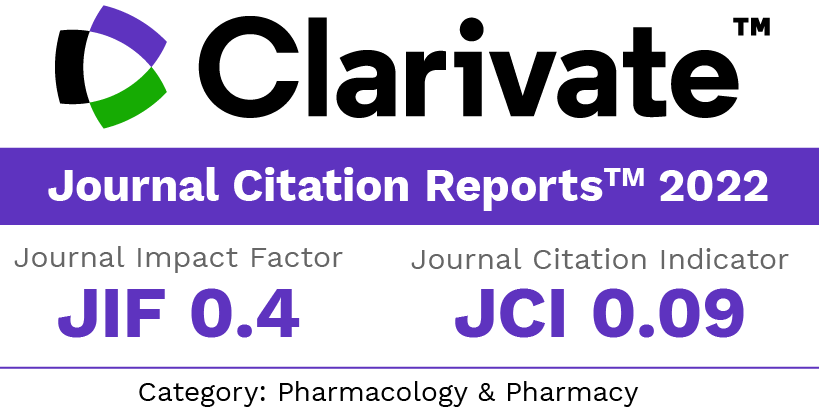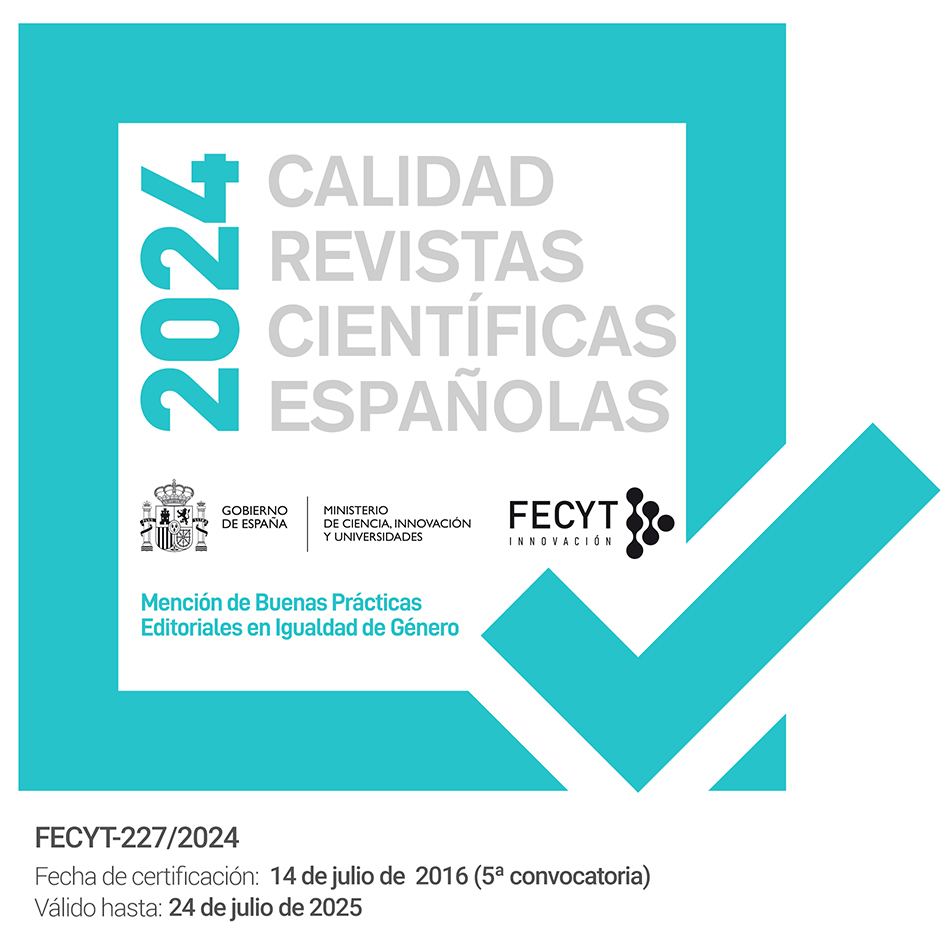Antiradical and antiulcer effect of Sonneratia apetala Buch-Ham leaves against alcohol induced gastric mucosal injury
DOI:
https://doi.org/10.30827/ars.v62i3.20759Keywords:
Antioxidant; Alcohol; Mangrove; HPTLC; Antiulcer; PhenolicsAbstract
Introduction: Sonneratia apetala Buch-Ham is a true mangrove inhabitant in Indian Sunderban and it is used in folk medicine for digestive disorders.
Method: Hydro-methanolic (20:80) extract of Sonneratia apetala leaves (SA) was chemically standardized by HPTLC and evaluated for its antiradical and gastro-protective properties. Phenolics and flavonoids present in SA were determined and antiradical activities were assessed by in vitro methods like, DPPH (1,1-diphenyl-2-picrylhydrazyl), nitric oxides, superoxides, hydroxyl and ABTS (2,2/-azino-bis-3-ethyl benzthiazoline-6-sulphonic acid). Further, gastro-protective efficacy of SA was assessed in alcohol (50% v/v, 5 ml/kg) induced oxidative ulceration in rats.
Results: Chemically standardized SA exhibited presence of polyphenolic compounds. It also showed strong antiradical properties. Oral administrations of SA (125 mg/kg and 250 mg/kg) significantly protected gastric mucosal membrane from ulcerative damage caused by alcohol, similar to Omeprazole (20 mg/kg) in rats. Moreover, SA treatment significantly reduced the elevation of lipid peroxides; while enhanced the concentration of glutathione and catalase in gastric mucosa in respect to ethanol induced untreated control rats.
Conclusions The results obtained from this study suggest Sonneratia apetala leaf has antioxidant properties and has capabilities to protect gastric mucosal injury caused by alcohol ingestion.
Downloads
References
Spalding M, Kainuma M, Collins L. World atlas of mangroves. Earthscan: London, 2010.
Mandal RN, Naskar KR. Diversity and classification of Indian mangroves: a review. Trop Ecol. 2008; 49:131-146.
Wu SB, Wen Y, Li XW, Zhao Y, Zhao Z, Hu JF. Chemical constituents from the fruits of Sonneratia caseolaris and Sonneratia ovata (Sonneratiaceae). Biochem Syst Ecol. 2009; 37:1-5. Doi: 10.1016/j.bse.2009.01.002
Bandaranyake WM. Traditional and medicinal uses of mangroves. Mang Salt Marsh.1998; 2:133-148. Doi:10.1023/A:1009988607044
Charoenteeraboon J, Wetwitayaklung P, Limmatvapirat C, Paechamud T. Hepatoprotective activity from various parts of Sonneratia caseolaris. Planta Med. 2007; 73:561-565.
Ali M, Muhit M, Goshwami D, Masud M, Begum B. Antioxidant, cytotoxic and antimicrobial activity of Sonneratia alba barks. Int J Pharm Sci Res. 2012; 3:2233-2237. Doi: 10.13040/IJPSR.0975-8232.3(7).2233-37
Majumdar SG, Patra G. Chemical investigation of some mangrove species. Part VI. Sonneratia apetala. J Indian Chem Soc. 1979; 56:218.
Jiny VK, Belzik N, Nisha AR, Resiya S, Resmi S, Silvipriya KS. Pharmacognostical and phytochemical studies of a mangrove (Sonneratia caseolaris) from Kochi of Kerala state in India. J Pharm Res. 2010; 3:2625.
Sadhu S K, Ahmed F, Ohtsuki T, Ishibashi M. Flavonoids from Sonneratia caseolaris. J Nat Med.2006; 60:264-265. Doi:10.1007/s11418-006-0029-3
Popovic M, Janicijevic HS, Kaurinovic B, Rasic J, Trivic S. Antioxidant effects of some drugs on ethanol-induced ulcers. Molecules. 2009; 14:816-826. Doi:10.3390/molecules14020816
Sumbul S, Ahmad A, Asif M, Akhtar M. Role of phenolic compounds in peptic ulcer: An overview. J Pharm Bioallied Sci. 2011; 3:361-367. Doi:10.4103/0975-7406.84437
Committee for the Update of the Guide for the Care and Use of Laboratory Animals. Guide for the Care and Use of Laboratory Animals. 8th ed. The National Academic Press: Washington DC., 2008.
Harbone JB, Phytochemical methods. 2nd ed., Chapman and Hall: London, 2002.
Sur TK, Hazra AK, Bhattacharyya D, Hazra A. Antiradical and antidiabetic properties of standardized extract of Sunderban mangrove Rhizophora mucronata. Pharmacog Res. 2015; 11:389-394. Doi:10.4103/0973-1296.153094
Banerjee D, Hazra AK, Seal T, Sur TK, Bhattacharyya D, Ray J, Mukherjee A, Mukherjee B. Antioxidant and anti-inflammatory activities of different solvent extracts and isolated compounds of Ipomoea pes-caprae (L) sweet of Sunderban mangrove eco-complex. Asian J Chem. 2013; 25:4997-5000.
Sur TK, Hazra A, Hazra AK, Bhattacharyya D. Antioxidant and hepatoprotective properties of Indian Sunderban mangrove Bruguiera gymnorrhiza L. leave. J Basic Clin Pharm. 2016; 7(3): 75-79. Doi: 10.4103/0976-0105.183262
Morimoto Y, Shimohara K, Oshima S, Sukamoto T. Effects of the new anti-ulcer agent KB-5492 on experimental gastric mucosal lesions and gastric mucosal defensive factors, as compared to those of teprenone and cimetidine. Japanese J Pharmacol. 1991; 57:495. Doi:10.1254/jjp.57.495
Sur TK, Pandit S, Bhattacharyya D, Debnath PK. Antiulcer activity of Shankha Bhasma (calcinated conch shell). Explor Anim Med Res. 2013; 3:48-56.
Mousa AM, El-Sammad NM, Hassan SK, Madboli AENA, Hashim AN, Moustafa ES, Bakry SM, Elsayed EA. Antiulcerogenic effect of Cuphea ignea extract against ethanol-induced gastric ulcer in rats. BMC Complement Altern Med. 2019 Dec 2;19(1):345. Doi:10.1186/s12906-019-2760-9.
Pandit S, Sur TK, Jana U, Bhattacharyya D, Debnath PK, Anti-ulcer effect of Shankha Bhasma in rats: a preliminary study. Indian J Pharmacol. 2000; 32:378-380.
Lyle N, Gomes A, Sur TK, Munsi S, Paul S, Chatterjee S, Bhattacharyya D. Possible role of antioxidant property of Nardostachys jatamansi in alleviation of chronic fatigue syndrome. Behav Brain Res. 2009; 202:285-290. Doi: 10.1016/j.bbr.2009.04.005
Bhattacharyya D, Pandit S, Jana U, Sen S, Sur TK. Hepatoprotective activity of Adhatoda vasica aqueous leaf extract on D-galactosamine induced liver damage in rats. Fitoterapia. 2005; 76:223-225. DOI: 10.1016/j.fitote.2004.10.014
World Health Organization. Level of consumption. 2016. https://www.who.int/data/gho/data/themes/topics/topic-details/GHO/levels-of-consumption
World Health Organization. Global status report on alcohol and health. 2014. https://www.who.int/substance_abuse/publications/global_alcohol_report/
Tang Y, Forsyth CB, Farhadi A, Rangan J, Jakate S, Shaikh M, Banan A, Fields JZ, Keshavarzian A. Nitric oxide-mediated intestinal injury is required for alcohol-induced gut leakiness and liver damage. Alcohol Clin Exp Res. 2009; 33:220-232. Doi: 10.1111/j.1530-0277.2008.00842.
Hajrezaie M, Salehen N, Karimian H, Zahedifard M, Shams K, Batran RA. Biochanin a gastroprotective effects in ethanol-induced gastric mucosal ulceration in rats. PloS One. 2015; 10:e01215291. Doi: 10.1371/journal.pone.0121529.
Mota KS, Dias GE, Pinto ME, Ferreira AL, Brito MS, Lima CA. Flavonoids with gastro-protective activity. Molecules. 2009; 14:979-1012. Doi:10.3390/molecules14030979.
Nordmann R. Alcohol and antioxidant systems. Alcohol. 1994; 29:513-522. Doi: 10.1093/oxfordjournals.alcalc.a045580
Published
How to Cite
Issue
Section
License
Copyright (c) 2021 Ars Pharmaceutica (Internet)

This work is licensed under a Creative Commons Attribution-NonCommercial-ShareAlike 4.0 International License.
The articles, which are published in this journal, are subject to the following terms in relation to the rights of patrimonial or exploitation:
- The authors will keep their copyright and guarantee to the journal the right of first publication of their work, which will be distributed with a Creative Commons BY-NC-SA 4.0 license that allows third parties to reuse the work whenever its author, quote the original source and do not make commercial use of it.
b. The authors may adopt other non-exclusive licensing agreements for the distribution of the published version of the work (e.g., deposit it in an institutional telematic file or publish it in a monographic volume) provided that the original source of its publication is indicated.
c. Authors are allowed and advised to disseminate their work through the Internet (e.g. in institutional repositories or on their website) before and during the submission process, which can produce interesting exchanges and increase citations of the published work. (See The effect of open access).























